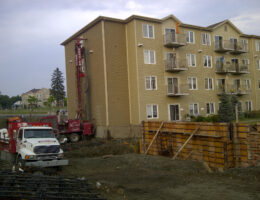Environmental drilling (piezometer)
Environmental drilling and the use of piezometers are essential techniques for monitoring and management of groundwater resources, crucial for environmental protection and sustainable water resource planning.
Environmental drilling, including the use of piezometers, is a technique used to monitor groundwater conditions. Here is a more detailed explanation:
Environmental Drilling
Environmental drilling aims to assess and monitor the quality and quantity of groundwater resources. It can also be used to detect the presence of contaminants.
It involves the creation of wells or holes in the ground until they reach the water table or other groundwater reservoirs. Water and soil samples can be taken at different depths for chemical and physical analyses.
Piezometer
A piezometer is an instrument used to measure the pressure of a liquid at a certain depth, primarily to monitor groundwater levels and pore pressure in soils.
The piezometer is often an open tube buried in the ground down to the water table. The water rises in the tube until it reaches a level corresponding to the hydraulic pressure of the water table. This level can be measured to obtain data on groundwater pressure.
Practical Uses
Water Quality Monitoring:
- Detection of contaminants such as industrial chemicals, pesticides, and hydrocarbons.
- Monitoring the dispersion of pollutants in groundwater.
Water Resources Management:
- Monitoring water levels for sustainable management of water resources.
- Prevention of overexploitation of aquifers.
Geotechnical and Environmental Studies:
- Assessment of hydrogeological conditions for construction projects.
- Analysis of flood or ground movement risks.
Benefits
- Accuracy: Provides accurate data on groundwater quality and pressure.
- Continuous Monitoring: Allows continuous, long-term monitoring of groundwater conditions.
- Adaptability: Can be used in various environments, including urban, agricultural, and industrial areas.





